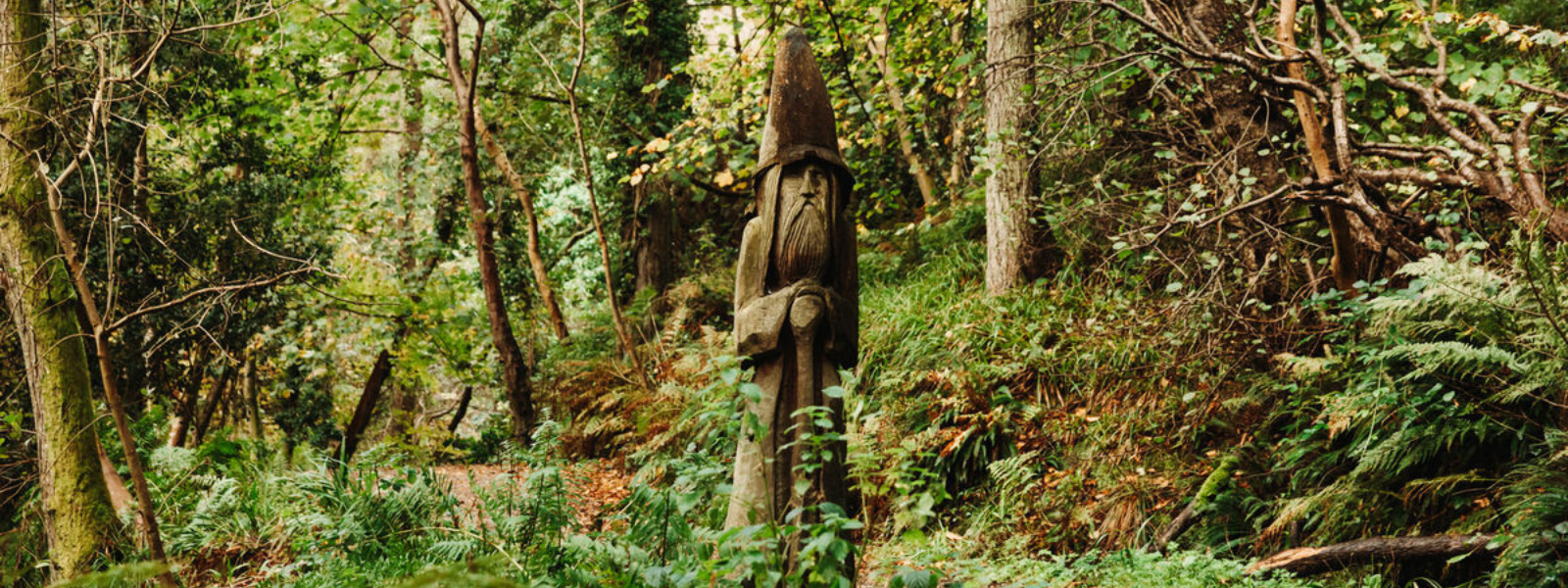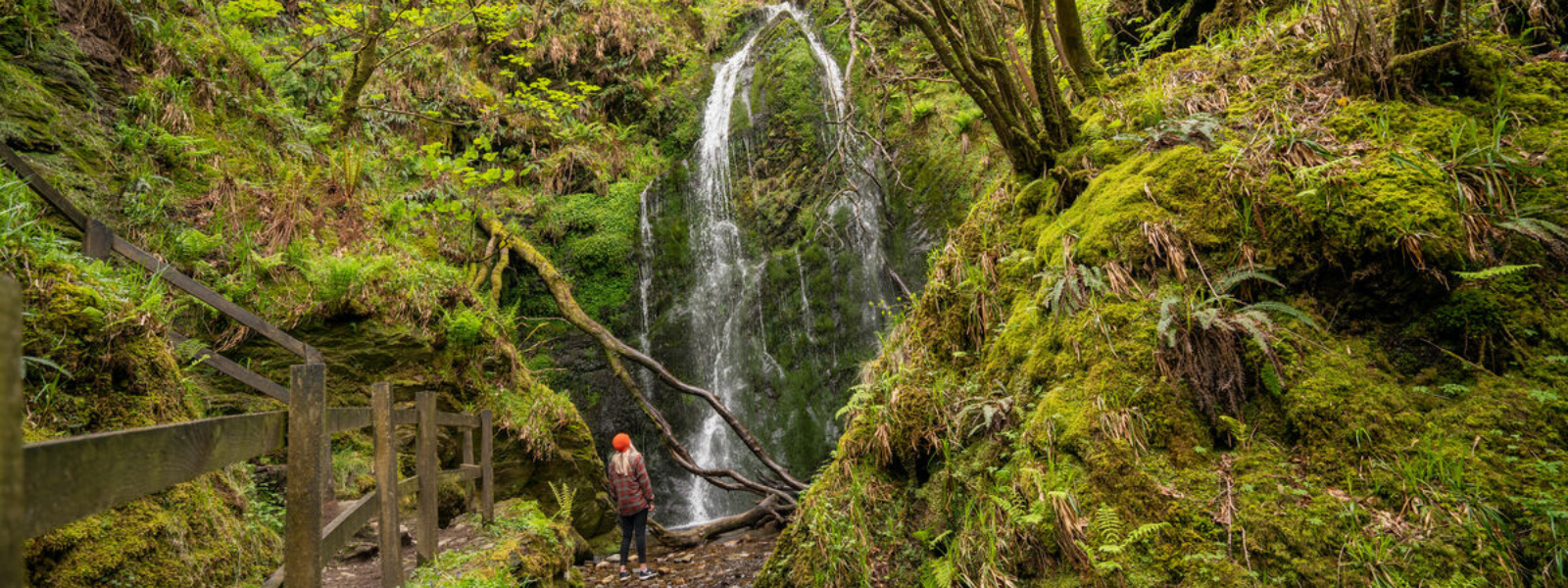The Isle of Man is well-known for its stunning glens. These valleys are filled with abundant woodland and often feature a babbling river that might just lead to a secret beach. They’re blissful areas to visit at any time of year, but we’ll let you in on a secret, visiting Manx glens in autumn might just be our favourite time to do so… Read on for our recommended magical glens to explore this autumn.
Ballaglass Glen
.png)
Ballaglass Glen is a classically beautiful Manx glen that’s located in Maughold, between Laxey and Ramsey. Its 16 acres are covered in trees that turn into a canopy of striking colours in the autumn, including oak, beech, birch, ash and larch. The glen once contained a Manx upland corn mill, and still contains the remains of stone buildings that were built by the Great Mona Mining Company to mine mineral veins running beneath the river bed.
.png)
The Cornaa river runs through the glen, having cut a deep channel through the rocks. Today it’s a brilliant place for gorge walking, which is quite an experience in the autumn, surrounded by the bright hues of the trees. What’s more, like Groudle Glen, Ballaglass Glen features a wooden tree sculpture of the Wizard of Mann, a particularly enchanting sight for little ones.
Ballaglass Glen is best accessed by car, bus or electric tram.
Groudle Glen

Groudle Glen is known not only for its scenic woodland of beech, pine and larch, and its pebbly shore. It’s also loved for its quaint features, including a picture perfect waterwheel, carved tree wizard, fairy doors, and a miniature railway which operates seasonally and follows the headland to the Sea Lion Rocks Tea Rooms, which opens when the railway is running. You can find more information about the autumn 2024 timetable here.
.png)
The glen became a big attraction in the time of the Victorians, when Californian Sea Lions used to be kept in a sea pool beside where the tea rooms stand. Interest in the glen came from the area featuring the only natural canyon on the Island, the Lhen Coan, which is Manx Gaelic for ‘Lonely Valley’.
Groudle Glen can be accessed via car, bus or electric railway. It has multiple entrances, one located on Whitebridge Road in Onchan, and two entrances on King Edward Road.
Laxey Glen

Laxey Glen is nestled in the heart of Laxey, a village known for both its mining and fishing history. Laxey Glen was created in 1800 when the Reverend William Fitzsimmons started a planting programme, which would continue for 60 years. What’s more, when Victorian businessman Mr R Williamson saw the potential for the area to be turned into a tourist attraction, he decided to build a pleasure ground that went on to become a must-see attraction when visiting the Island in the 1800s and early 1900s.
Nowadays the glen is a lovely spot for a wander along the river, surrounded by mature exotic trees and natural woodland, with leaves turning stunning shades of orange and yellow in autumn. It’s a particular favourite for families as it has two great playgrounds and a grass paddock, not to mention plenty of muddy puddles to splash in during the autumn months.

The glen has easy wheelchair access and toilet facilities and it can be accessed by car, electric railway or bus.
Glen Maye
.png)
Located three miles south of Peel, Glen Maye is a fern-filled glen that features one of the Island’s tallest waterfalls, a bridged gorge and the wheel case of the ‘Mona Erin’, a waterwheel that was used from 1740 and 1870 to provide power to the Manx lead mines in the area. What’s more, its pathway opens out onto the quiet shores of the pebbly Glen Maye Beach.

The glen shows what the Island looked like in ancient times, when it was covered in woodland. Whilst a hotspot for ferns, Glen Maye also has plants that can’t be found elsewhere on the Isle of Man, such as wood vetch, hairy brome and ‘Glen Maye Bramble’, a variant of the common blackberry.
You can access the glen via car or bus from Dalby Road, or by foot when walking the Raad ny Foillan, the Isle of Man’s coastal footpath. If you’d like to experience both immersive autumnal woodland and fresh sea air, Glen Maye is the one for you.
Dhoon Glen

Dhoon Glen is amongst the Isle of Man’s steepest glens, making its meandering river and powerful waterfall dramatically beautiful. The main path follows an old cart road through the woodland, particularly vibrant in the autumn with its wych elm, sycamore, ash and birch trees.
Halfway down the valley, you’ll pass the ‘Big Girl’ or ‘Inneen Vooar’ waterfall which falls over 40 metres in two impressive drops. You’ll later emerge on the lovely shore of Dhoon Bay, with its impressive rock formations and peaceful isolation. The alternative route to/from the beach leads you down the cliff side with its spectacular views.
In the late 1800s the small passenger ship, the Manx Fairy, used to run daily between Ramsey and Douglas, allowing passengers to depart at Dhoon to spend time on the beach and in the glen. Nowadays, the glen is accessed via car, bus or electric railway at the entrance on Ramsey Road.
Click here for more information on the Isle of Man's magical glens.






Comments
Comments are disabled for this post.